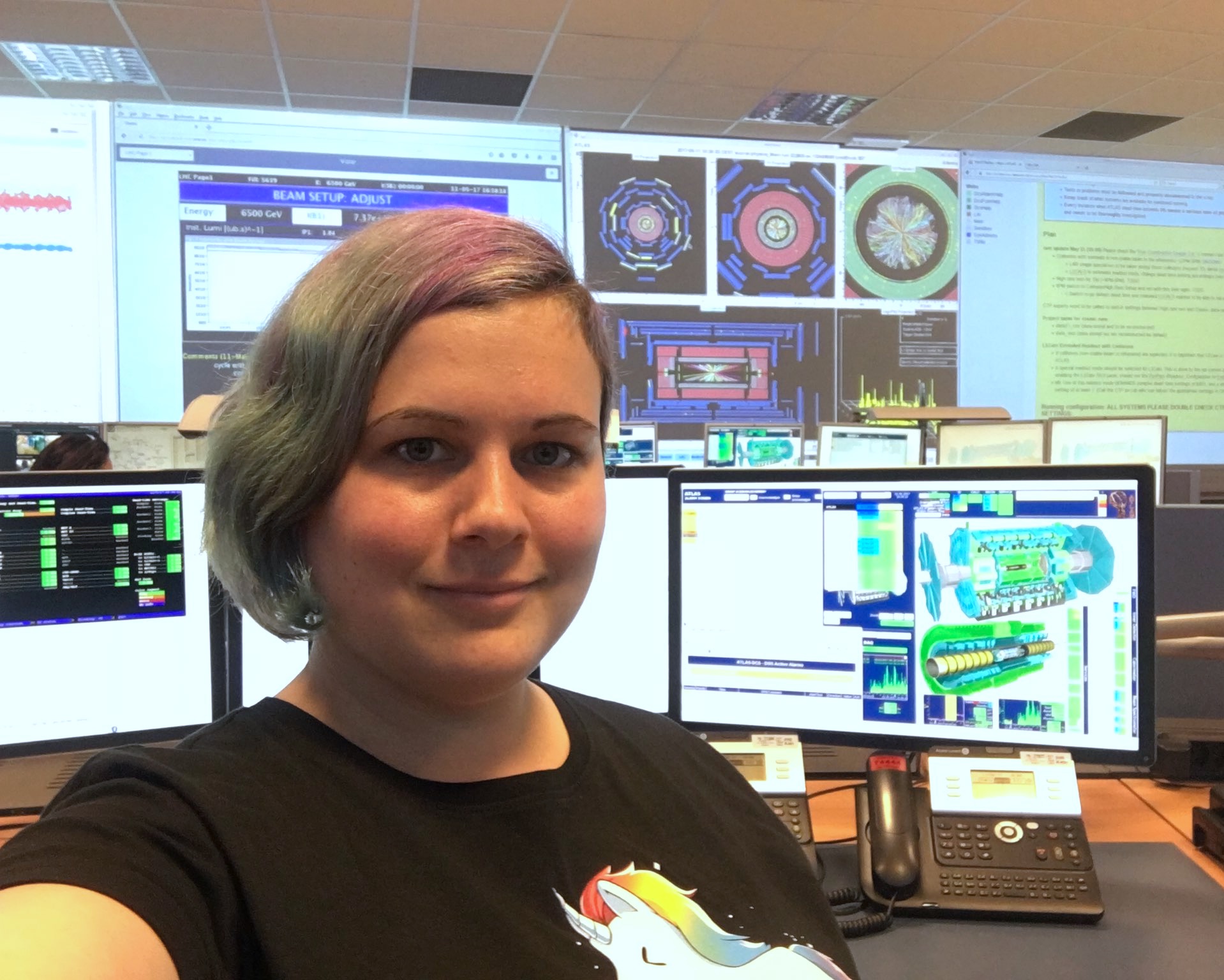How to run a particle detector
23 June 2017 | By
If you are interested in particle physics, you probably hear a lot about the huge amount of data that is recorded by experiments like ATLAS. But where does this data come from? Roughly speaking: first you have to plan, build and maintain an experiment and in the end you need people to analyse the data you’ve recorded. But what happens in between? What happens in the day-to-day life of people in the ATLAS control room, who are responsible for keeping all that great data coming?
24 hours a day, 7 days a week, people are working at the ATLAS control room to keep the detector healthy and running. We have shifters who constantly check the subsystems of ATLAS, namely the tracking, calorimeter and muon systems. Then there are shifters who take care of the data recording itself, starting and stopping the data-taking, making sure we have the correct recording rates and monitoring the raw data that comes in. And then there is myself, acting as the shift leader.
What does a shift leader do? Well, I’d say it is mainly talking to people. I am responsible for making sure that all the other shifters are communicating all the time to ensure that no problem goes unnoticed. If the data quality shifter sees any deviation from the expected output, she will inform me and we can follow up on what is causing this with the shifter of the affected subsystem or experts on call. This way we make sure that all the data we record is of highest quality and we don’t lose data that we could have recorded.
That week, though, there were no stable beam collisions and therefore no “normal” data-taking going on, so what were we doing during a shift?
When I started my shift at 3pm on 10 May 2017, the LHC was just ramping up its energy and ATLAS was already in data recording mode, ready to receive the first collisions in 2017. The first thing on your list as shift leader is to check if your crew is complete and, as you can see from the pictures of that day, we had our fair share of women working in the control room.
24 hours a day, 7 days a week, people are working at the ATLAS control room to keep the detector healthy and running.
After checking that all systems were working faultlessly and that the recording settings were correct, we had to wait for the LHC to find the right beam position to provide collisions in ATLAS. Only half an hour after they started to fine-tune the beams, we had the first collisions of 2017! This is an important milestone for the whole community and you can easily see how excited everybody gets by events like this by looking at the reaction of the shift crew. Everybody got up to take pictures of the event displays, showing the particle tracks of those first collisions. It feels a bit as if you are six years old again, it’s your birthday and you just got an amazing gift.
After the beams were dumped, the data-taking was stopped to give our experts time to do stand-alone work with their systems. During this time, the experts are able to do calibrations, update parts of the software or run tests to verify former updates. My job between beam fills is mainly to take care that everybody sticks to the given time schedule. But since there is no time-crucial data-taking going on, it is a bit more relaxed than during times where we have colliding beams in the LHC. Therefore, I sometimes use this time to inform the public about what is going on with the LHC and ATLAS via my Twitter and Instagram accounts.
With the LHC once again providing collisions at full intensity, we will be able to record more and more data, giving analysts the ability to look deeper and deeper into the mysteries of nature.










